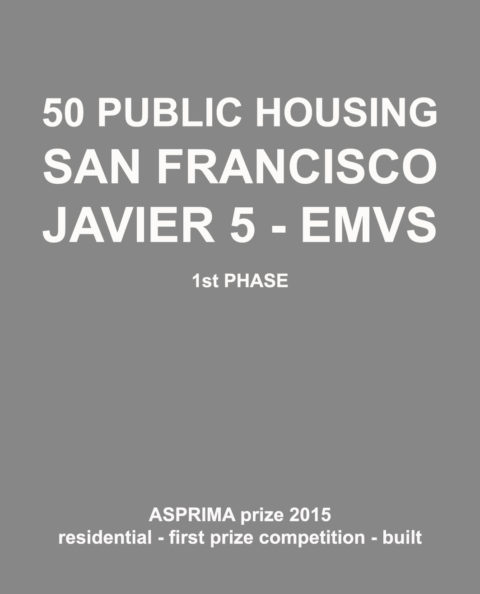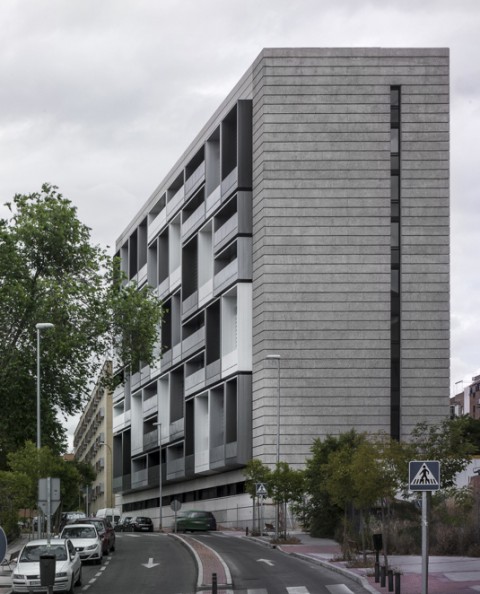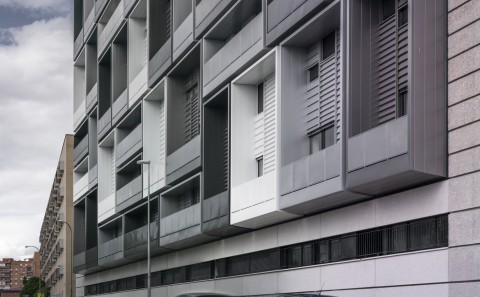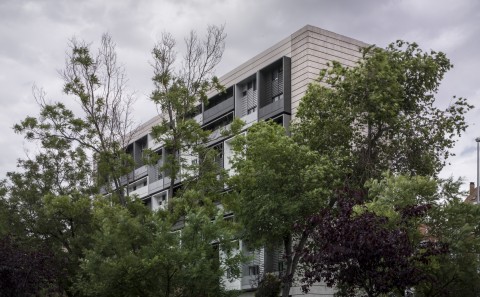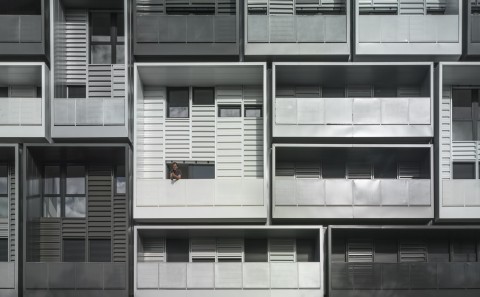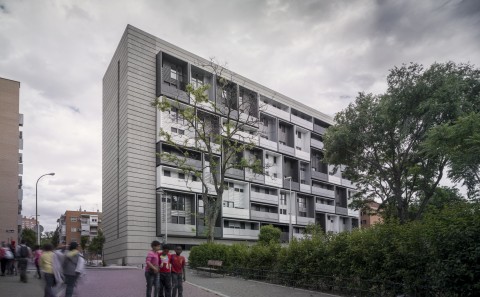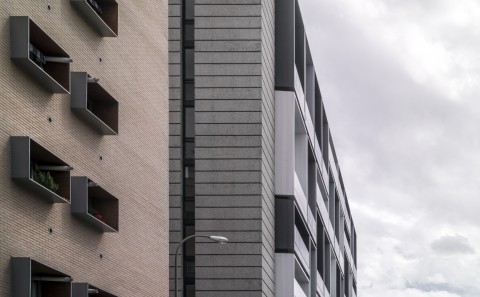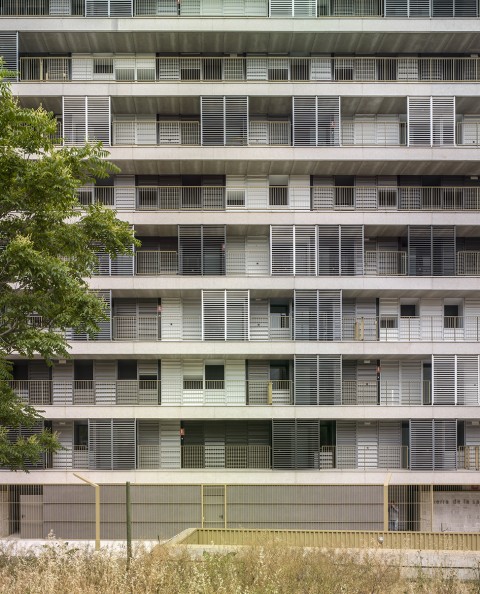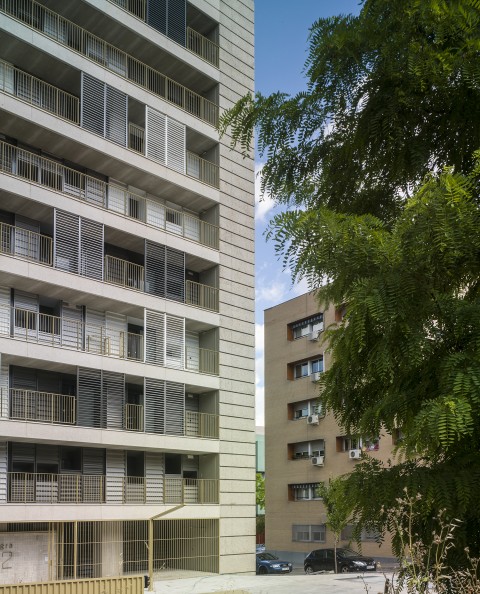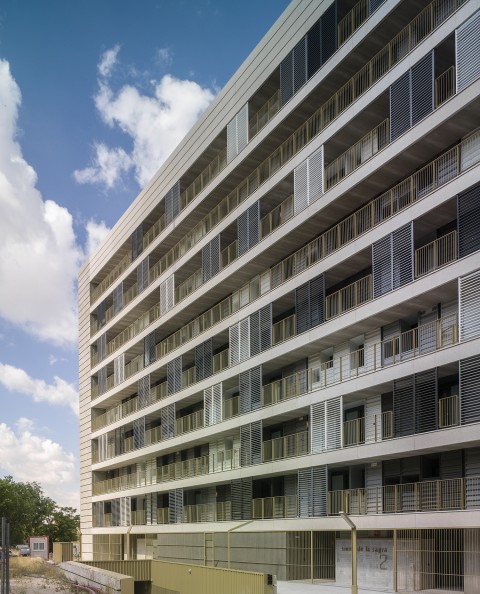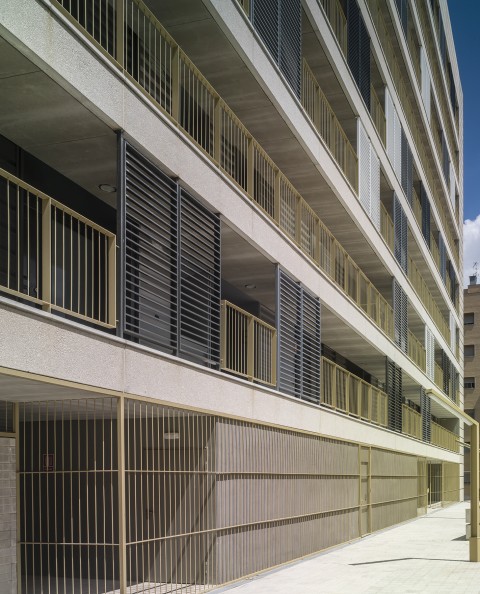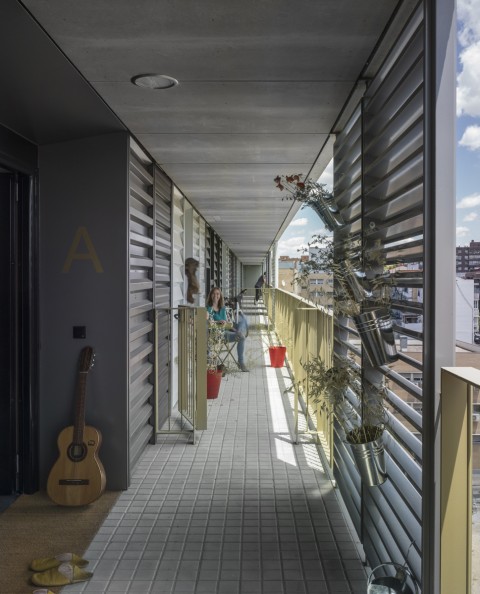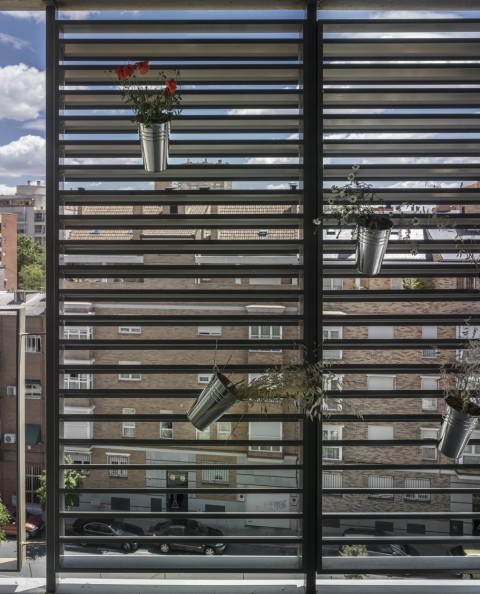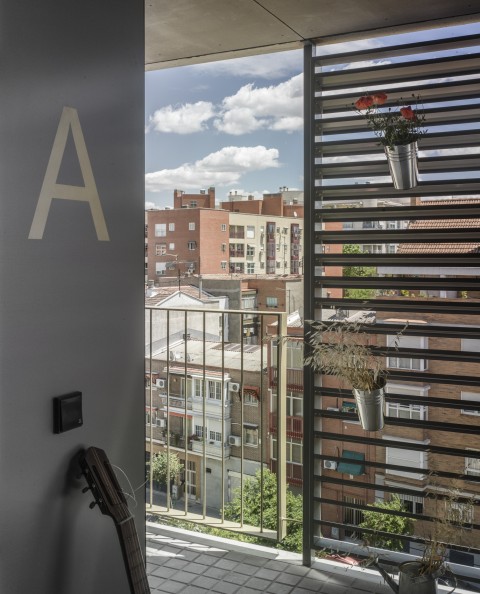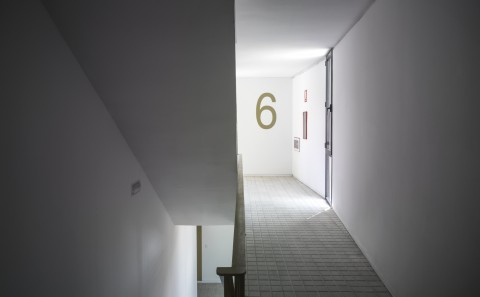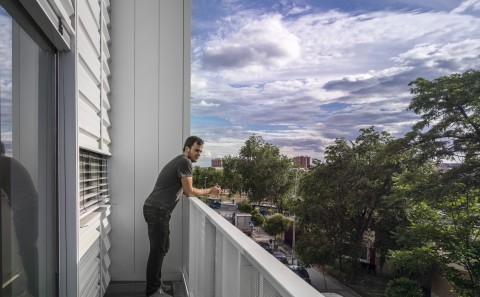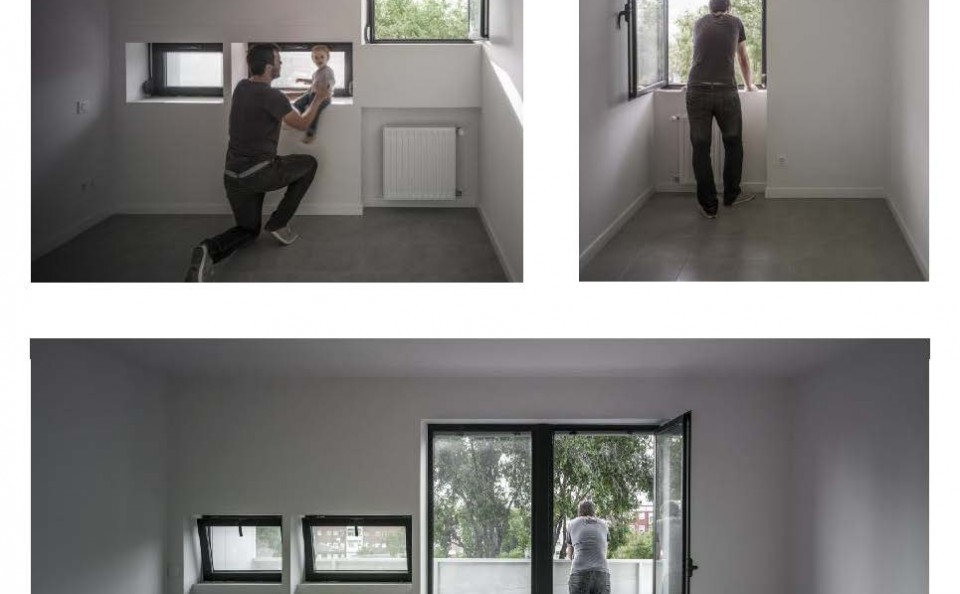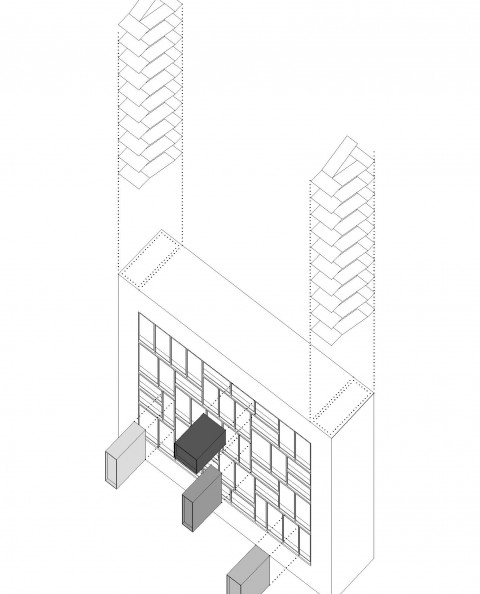The architecture of the building is a device of mediation able to respond and render explicit the various agencies involved in residential developments, arranging them individually as the best way to build the collective. To do so, we incorporate the model for constructing the city and the result is a building that is configured as a VERTICAL VILLAGE.
Like a matryoshka doll, a series of nested spheres operate at different scales and respond to different agencies and actors and independent areas of indeterminacy are generated.
Firstly, an outer frame defines the urban parameters and the common elements of the building. The frame contains a matrix where the houses are assembled. According to the spirit of the Special Plan for the area, a building «screen» is incorporated around the existing urban void. In order to avert multiple vertical cores, the houses gain access through galleries that act as elevated streets and provide maximum flexibility for the matrix in order to accommodate the 50 apartments (2, 3 or 4 bedrooms units). The units are 10 meters depth and all of them have double orientation.
The second sphere of indeterminacy corresponds to each house. Units of one or two floors are combined into the matrix. The duplex typology have the advantage that only the kitchen and hall open to the communal gallery, while bedrooms and living rooms have excellent views while maintaining their privacy.
Each house is established as an independent sphere within the matrix and therefore is freely configurable both internally and externally. Facilities and services are located in two main axes that are parallel to the façade, so the floor plans are flexibly arranged. The façade is an array of textures of deep shadows set according to inner criteria. As a result, colors, windows and other façade elements can be customized without diminishing the common display of the building. The system enriches the result while fosters the sense of belonging of the future inhabitants.
The families will own their homes, they will raise or demolish partitions, they will paint their houses, they may, if desired, modify the façade or openings, they will colonize the terraces and occupy the public galleries. Each one of this actions will be rendered explicit in the outside while the community is constructed over time in a diverse and enriching way. Not a single mind could devise this without overriding the individual initiative.
description
50 PUBLIC HOUSING SAN FRANCISCO JAVIER 5 – EMVS
calle sierra de la sagra nº 2, 4, 6
puente vallecas – madrid – spain
project 2007 – construction 2012-2014
client/developer
empresa municipal de la vivienda y suelo de madrid s.a.
architects
elena orte
guillermo sevillano
collaborators/consultants
bárbara rodríguez. architect
luis quintano. architect
sónia barbosa. architect
jesús huerga. structure engineer
nuria sáiz. quantity surveyor
miguel sánchez. computer science engineering
ares ingenieros. services and mechanical engineering
jesús granada. photos
contractor
isolux corsán corviam s.a. – contractor

